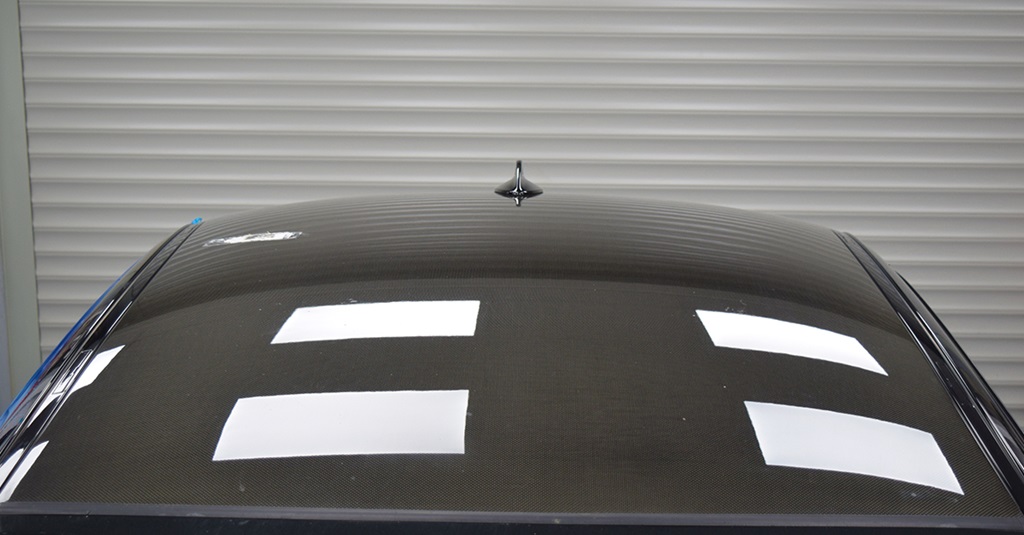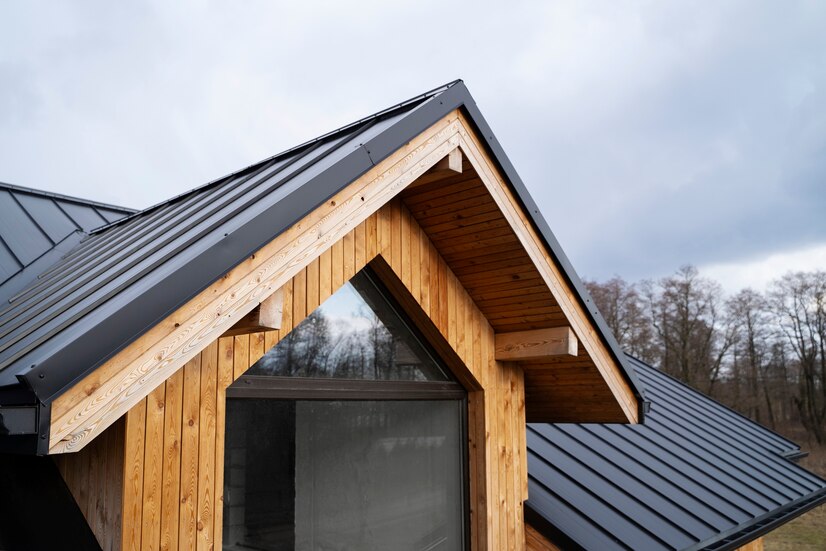In an era where environmental consciousness is no longer a trend but a necessity, the concept of “eco roofing” is gaining significant traction. It’s more than just a roof; it’s a commitment to sustainability, a testament to harmonizing our living spaces with nature. Eco roofing, in its essence, encompasses a range of roofing systems and materials designed to minimize environmental impact, enhance energy efficiency, and promote ecological balance. Let’s delve deep into this fascinating field, exploring its various facets and understanding why it’s becoming a cornerstone of modern construction.
What Exactly is Eco Roofing?
Eco roofing isn’t a singular product but a holistic approach. It encompasses a spectrum of roofing solutions that prioritize environmental sustainability. This can involve using recycled materials, implementing energy-efficient designs, or creating habitats for local flora and fauna. The core principle is to reduce the carbon footprint of a building while enhancing its performance and longevity.
The Core Components of Eco Roofing
Green Roofs: Living Ecosystems Atop Your Home
Green roofs, also known as living roofs, are perhaps the most iconic example of eco roofing. They involve covering a rooftop with vegetation and a growing medium, planted over a waterproofing membrane. These roofs offer a multitude of benefits:
- Improved Insulation: Green roofs act as natural insulators, reducing heat transfer and lowering energy consumption for heating and cooling. The soil and vegetation buffer temperature fluctuations, keeping buildings cooler in summer and warmer in winter.
- Stormwater Management: They absorb rainwater, reducing runoff and mitigating the risk of flooding. This is particularly crucial in urban areas where impervious surfaces contribute to increased stormwater volume.
- Air Purification: Plants naturally filter pollutants from the air, improving air quality in surrounding areas.
- Biodiversity Enhancement: Green roofs provide habitats for insects, birds, and other small animals, contributing to urban biodiversity.
- Extended Roof Lifespan: The vegetation layer protects the roofing membrane from UV radiation and temperature extremes, extending its lifespan.
Green roofs can be extensive (shallow soil layer, requiring minimal maintenance) or intensive (deeper soil layer, supporting a wider range of plants, including shrubs and small trees). The choice depends on the building’s structural capacity and the desired level of biodiversity.
Cool Roofs: Reflecting the Sun’s Heat
Cool roofs are designed to reflect sunlight and absorb less heat than standard roofs. They are typically made from highly reflective materials or coated with specialized paints that minimize solar heat gain.
- Reduced Urban Heat Island Effect: By reflecting sunlight, cool roofs help mitigate the urban heat island effect, where urban areas experience significantly higher temperatures than surrounding rural areas.
- Lower Energy Bills: Reduced heat absorption translates to lower cooling costs, saving homeowners and building owners money on energy bills.
- Increased Roof Lifespan: Lower temperatures reduce thermal stress on the roofing material, extending its lifespan.
- Environmental Benefits: Lower energy consumption reduces greenhouse gas emissions associated with electricity generation.
Cool roofs can be made from various materials, including reflective coatings, white or light-colored tiles, and specialized roofing membranes.
Solar Roofing: Harnessing the Power of the Sun
Solar roofing integrates photovoltaic (PV) panels directly into the roofing material, allowing homeowners to generate electricity from sunlight.
- Renewable Energy Generation: Solar roofs provide a clean, renewable energy source, reducing reliance on fossil fuels.
- Reduced Energy Costs: Generating your own electricity can significantly reduce or even eliminate electricity bills.
- Increased Property Value: Solar roofs can increase a property’s value, as they offer long-term energy savings and environmental benefits.
- Government Incentives: Many governments offer incentives, such as tax credits and rebates, to encourage the adoption of solar roofing.
Solar roofing systems can be integrated into traditional roofing materials like shingles or tiles, or they can be designed as standalone systems that replace traditional roofing altogether.
Recycled and Sustainable Roofing Materials
Eco roofing also emphasizes the use of recycled and sustainable roofing materials. This includes:
- Recycled Metal Roofing: Made from recycled aluminum or steel, metal roofing is durable, long-lasting, and highly reflective.
- Recycled Plastic Roofing: Roofing tiles and shingles made from recycled plastic waste provide a sustainable alternative to traditional materials.
- Wood Shingles and Shakes from Sustainable Forests: Using wood from sustainably managed forests ensures that timber harvesting does not contribute to deforestation.
- Clay Tiles: Clay is a natural, abundant material, and clay tiles are durable and long-lasting.
- Slate Roofing: Slate is a natural stone that is extremely durable and requires minimal maintenance.
Choosing recycled and sustainable materials reduces the environmental impact of roofing by minimizing waste and conserving natural resources.
The Benefits of Eco Roofing: Beyond Environmental Impact
While environmental sustainability is the primary driver behind eco roofing, it also offers numerous other benefits:
- Improved Building Performance: Eco roofs enhance insulation, reduce energy consumption, and improve stormwater management.
- Increased Property Value: Eco-friendly features can make a property more attractive to buyers, increasing its market value.
- Enhanced Indoor Air Quality: Green roofs and other eco-friendly roofing systems can contribute to improved indoor air quality by filtering pollutants.
- Noise Reduction: Green roofs can absorb sound, reducing noise pollution inside and outside the building.
- Aesthetic Appeal: Eco roofs can enhance the aesthetic appeal of a building, creating a more natural and visually appealing environment.
Your Roof’s Year-Round Maintenance Guide: Tips and Tricks for Longevity and Protection
People Also Ask (FAQs)
Q: How much does an eco roof cost?
A: The cost of an eco roof varies depending on the type of system, materials used, and the complexity of the installation. Green roofs, for example, can be more expensive than traditional roofs due to the need for specialized waterproofing and growing medium. However, long term energy savings, and potentially government incentives, can lessen the burden.
Q: Are green roofs heavy? Can my roof support one?
A: The weight of a green roof depends on the type of system (extensive or intensive) and the depth of the growing medium. It’s crucial to consult with a structural engineer to ensure your roof can support the added weight.
Q: How much maintenance do eco roofs require?
A: Maintenance requirements vary depending on the type of eco roof. Extensive green roofs require minimal maintenance, while intensive green roofs may require regular watering, weeding, and pruning. Cool roofs typically require minimal maintenance, while solar roofs may require occasional cleaning and inspection.
Q: Are there any government incentives for eco roofing?
A: Many governments offer incentives, such as tax credits, rebates, and grants, to encourage the adoption of eco roofing. These incentives can vary depending on location and the specific type of eco roof.
Q: Can eco roofs be installed on existing buildings?
A: Yes, eco roofs can be installed on existing buildings, but it’s essential to assess the building’s structural capacity and ensure that the roof can support the added weight.
Q: What are the best plants to use on a green roof?
A: The best plants for a green roof are those that are drought-tolerant, low-maintenance, and adapted to the local climate. Sedums, succulents, and native grasses are often good choices.
Q: How long do eco roofs last?
A: Eco roofs can last significantly longer than traditional roofs, especially green roofs, which protect the roofing membrane from UV radiation and temperature extremes.
Conclusion
Eco roofing represents a paradigm shift in building design, moving away from conventional roofing systems towards sustainable solutions that benefit both the environment and building occupants. By embracing green roofs, cool roofs, solar roofing, and recycled materials, we can create buildings that are not only energy-efficient and durable but also contribute to a healthier and more sustainable future. As awareness of environmental issues continues to grow, eco roofing is poised to become an increasingly important component of sustainable construction practices, paving the way for a greener and more resilient built environment.
The initial higher cost is offset by long term savings, and the value of contributing to a healthier planet. With the right planning and implementation, eco roofing can transform our homes and buildings into living, breathing ecosystems that harmonize with nature.
Read more:
Unveiling the Unrivaled Champion: Why EPDM Roofing Reigns Supreme for Flat Roofs
Everything You Need to Know About TPO Roofing: A Comprehensive Guide






